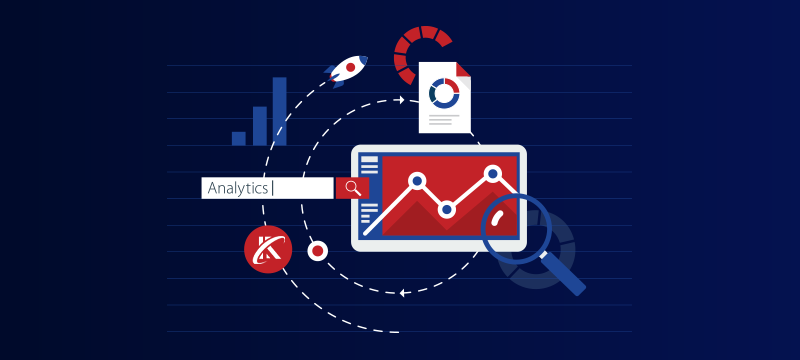As a website owner, it’s essential to understand how your site is performing so that you can identify areas for improvement and make informed decisions about how to optimise the site. This is where website analytics plays a vital role, by providing you with valuable insights about website performance, user behaviour, audience demographics and more. In this post, we’ll explain what you need to do to track your website’s analytics and performance.
- Choose a web analytics tool
The first step to tracking your website’s analytics is to choose a web analytics tool. There are many available and some even come as part of your control panel. By far the most popular analytics tool is Google Analytics. This is free to use (you will need to create an account) and is used by over 28 million websites globally because of its user-friendly interface and the wealth of valuable information it provides. - Install the tracking code
Once you have selected a web analytics tool, the next step is to install the tracking code on your website. This is essential as the tracking code is what enables the tool to collect data about your website’s visitors and their behaviour. If you set up a Google Analytics account, the tracking code can be obtained from there.Tracking codes need to be inserted into your website’s HTML. The easiest way to achieve this is to install one of the plugins, extensions or add-ons that will do this for you. All you’ll need to do is add the tracking code to an input box on the plugin and the plugin will insert it into the HTML.
- Set up goals and funnels
Goals and funnels are powerful features in web analytics tools that allow you to track specific user actions on your website, such as completing a purchase or filling out a contact form. Setting up goals and funnels can help you track your website’s conversion rates and identify areas for improvement. In Google Analytics, you can set up goals and funnels by navigating to the Admin section of your account and selecting Goals.Goals and funnels help you understand which parts of your website are working successfully in terms of achieving your business objectives. For instance, you can find out which pages have good conversion rates, and which do not. You can then seek to improve the ones that aren’t performing as well.
- Monitor traffic sources
One of the most valuable insights that web analytics tools provide is information on your website’s traffic sources. By tracking where your visitors are coming from, you can identify which marketing channels are driving the most traffic to your website and adjust your marketing strategy accordingly.In Google Analytics, you can view your website’s traffic sources by navigating to the Acquisition section. This offers a very diverse and useful range of data, including things like the top search terms people use to find your website, where searchers are located, the devices they use, whether they have arrived via organic search, advertisement, social media, web link or other means.
- Analyse user behaviour
Another important aspect of web analytics is understanding how users behave on your website. This includes metrics such as bounce rate, time on site and pages per session. By analysing these metrics, you can identify which pages on your website are performing well and which pages may need improvement. You can also see how users journey through your site from page to page, which can be helpful in seeing where the main issues are, for example, if there is a page that seems to cause a lot of people to leave the website. In Google Analytics, you can view user behaviour metrics by navigating to the Behaviour section. - Monitor site speed
Site speed is an important factor in website performance as users tend to abandon websites that take too long to load and Google downranks slow websites. Web analytics tools can help you monitor your website’s load times and identify any performance issues that may be affecting your site’s user experience. In Google Analytics, you can view site speed metrics by navigating to the Behaviour section. You can also test your site speed and get feedback using PageSpeed Insights. - Use A/B testing
A/B testing is a powerful website improvement tool that allows you to test different versions of your website to see which one performs better. By using A/B testing, you can make data-driven decisions to optimise your website and improve its performance. In Google Analytics, you can set up A/B testing experiments by navigating to the Behaviour section.
Conclusion
Tracking your website’s analytics and performance is essential for website owners who want to improve their site’s effectiveness. By using a web analytics tool like Google Analytics, setting up goals and funnels, monitoring traffic sources, analysing user behaviour, monitoring site speed and using A/B testing, you can gain valuable insights into your website’s performance and make informed decisions on how to make it more effective. Looking for fast, secure and affordable hosting that comes with 24/7 technical support and a wide range of helpful features? Check out our Shared Linux Web Hosting With cPanel.

